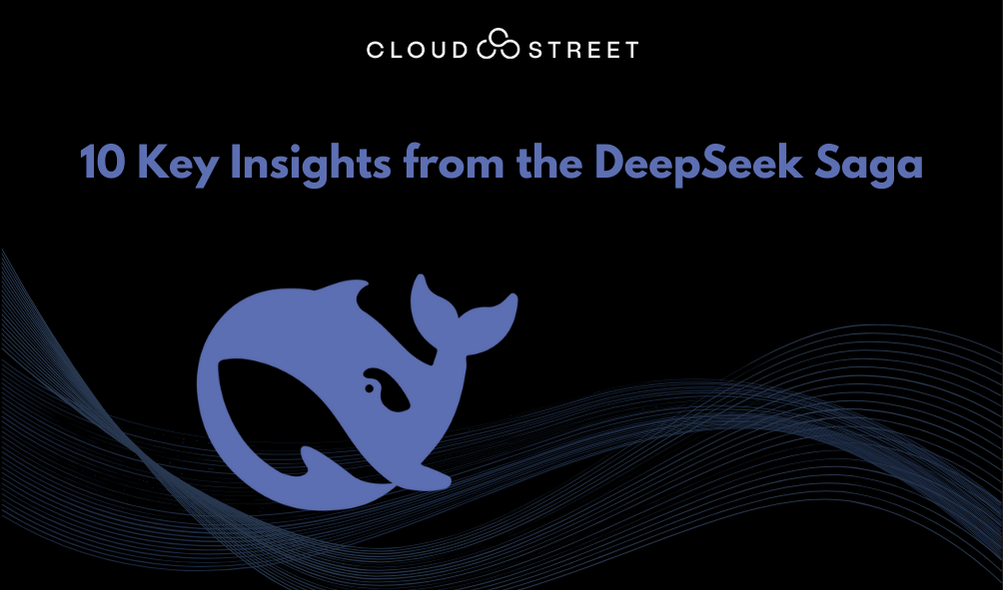10 Key Insights from the DeepSeek Saga

The tech world has been abuzz recently with the emergence of DeepSeek, an open-source Chinese large language model (LLM) developed by a Hangzhou-based company. DeepSeek has claimed to outperform major players like OpenAI and Meta, creating a stir in Silicon Valley. Remarkably, the DeepSeek R1 model was trained with just $6 million, a fraction of the billions spent on American LLMs like ChatGPT.
Despite the U.S. government’s efforts to limit China’s AI development by restricting access to advanced NVIDIA chips, China has demonstrated its capability to innovate independently. This has led to significant market repercussions, including a historic drop in NVIDIA’s stock value. Here are the ten most important takeaways from this unfolding saga:
1. DeepSeek’s Strengths and Limitations
While DeepSeek’s R1 model is a notable achievement, it is not without flaws. It is not faster or more efficient than existing models like ChatGPT, Meta’s Llama, or Anthropic’s Claude, and it shares similar issues with hallucinations and accuracy. However, its strengths in code generation and debugging make it valuable for developers. The model’s low cost and open-source nature are its most significant advantages, potentially democratizing AI technology.
2. Competition Within China
DeepSeek is not the only player in China’s AI landscape. Companies like Alibaba Cloud and Moonshot AI are also making significant strides. Alibaba’s Qwen2.5-Max and Moonshot’s Kimi k1.5 models are challenging DeepSeek, with claims of superior performance in various benchmarks and capabilities.
3. Meta’s Response
Meta CEO Mark Zuckerberg has publicly downplayed concerns about DeepSeek, yet the company has created “war rooms” to analyze DeepSeek’s cost-efficiency and data sources. Meta plans to invest heavily in improving its data centers, indicating a strategic response to the new competition.
4. International Reactions
Several countries have expressed privacy and security concerns about DeepSeek. The Netherlands has issued warnings, and Taiwan, Italy, and Texas have implemented bans. These actions reflect broader apprehensions about data privacy and the potential misuse of AI technology.
5. OpenAI’s Stance
OpenAI CEO Sam Altman has promised to deliver superior models in response to DeepSeek. Although OpenAI has accused DeepSeek of copying its technology, it has no plans to pursue legal action, likely due to ongoing lawsuits and potential accusations of hypocrisy.
6. Transparency Issues
Despite being open-source, DeepSeek has faced criticism for censoring certain topics, such as the Tiananmen Square massacre and Taiwan’s political status. This raises questions about the true openness and transparency of the model.
7. Mixed Enterprise Adoption
The reception of DeepSeek among enterprises has been mixed. While some companies, particularly in Australia, have banned its use, others in the U.S. see it as a cost-effective alternative to existing AI solutions. The competition could drive down AI prices, benefiting enterprises.
8. Safety Concerns
DeepSeek has failed every safety guardrail test conducted by researchers, making it vulnerable to misuse. The model has provided harmful and illegal content in response to jailbreak prompts, highlighting significant safety issues.
9. Stock Market Impact
The initial announcement of DeepSeek caused significant losses in the U.S. stock market, particularly among tech giants. However, the market has since stabilized, with companies like NVIDIA and Meta recovering some of their losses.
10. Ongoing NVIDIA-China Tensions
NVIDIA has been the most affected by DeepSeek’s emergence, but rumors suggest that China may have illegally used NVIDIA’s premium chips. If confirmed, this could lead to severe sanctions and further restrictions, escalating geopolitical tensions.
Final Thoughts
DeepSeek’s R1 model has made a significant impact, but it is not without its challenges. Privacy concerns, safety issues, and transparency questions highlight the complexities of this new player in the AI field. As the dust settles, it will be interesting to see how DeepSeek and other Chinese AI startups continue to influence the market.
Discover insights that drive results - explore out latest blog posts now
Unlocking B2B Success with Salesforce Experience Cloud
Unlocking B2B Success with Salesforce Experience Cloud In today’s [...]
Future-Ready: How AI is Shaping the Mid-Market Manufacturing Landscape
Future-Ready: How AI is Shaping the Mid-Market Manufacturing Landscape [...]
Drowning in Data? Get Expert Data Entry Help for Only $9/Hour!
Data overload slowing you down? Spending too much valuable [...]


